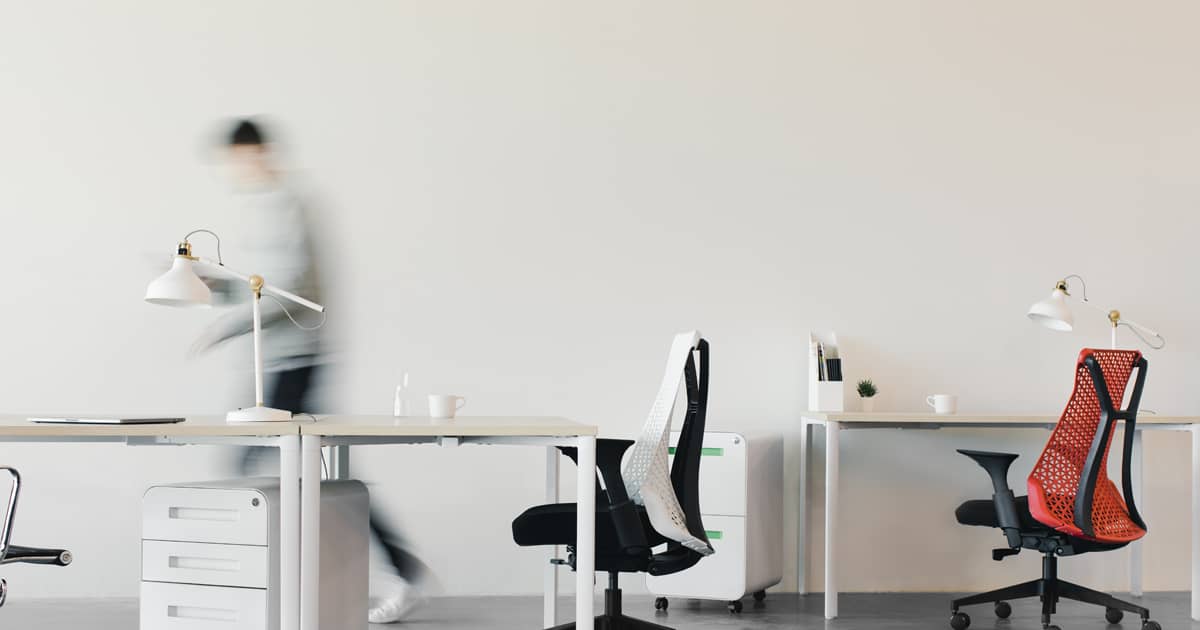How To Set Up An Ergonomic Office Interior

Employees are the key assets of a company — they are the determiners of a business’s success, the most important contributors to shareholder value, and the greatest influencers of higher sales and lower running costs. This explains why putting efforts into their well-being, comfort, and security is one of the best investments an organization can make.
Among the various ways to prioritize your employees, setting up an ergonomic office interior design is the most effective idea. Continue scrolling to learn more!
What Are Office Ergonomics?
Ergonomics generally refers to improving the design of a space to optimize it for human use. When applied to an office, the main objective is to create an environment that is pleasant for working and keeps in view the comfort of each individual.
In other words, an ergonomically designed office is one that supports a neutral position for your body and practically trains you to maintain a good posture. Such a workstation assists you in sitting in front of the computer for extended periods without the risk of long-term pain and discomfort. This means your arms aren’t lifted, your neck isn’t contorted, your wrists aren’t bent, and your spine isn’t twisted.
Now let’s discover the multiple ways you can implement to thoroughly adopt the principles of an ergonomic office in your upcoming office renovation.
Invest In Ergonomic And Supportive Seating
Suitable office system furniture is an essential piece of the ergonomic workspace puzzle. Think of spending 8 to 15 hours in an uneasy chair. Doesn’t it sound like an invitation to all sorts of ailments, including neck and back pain? The best solution is to opt for seating that eradicates the risks of any such problems.
Whether you go for task chairs, executive chairs, drafting chairs, accent chairs, or any other option that suits your office’s needs, make sure to consider the following factors to make the best choice.
- Seat height should be adjustable to allow you to set it high or low enough in a position where your thighs are horizontal, your feet are flat on the floor, and your arms are even with the desk’s height.
- Seat depth is, ideally, around 16.5” for fixed seats while 14” to 18.5” for adjustable seats. The right depth for each individual is the point where a fist can fit between the edge of your seat and the backside of your knees, with your back resting against the backrest.
- Lumbar support means that the back of the chair should curve inward, like the lumbar spine. Pro Tip: Use lumbar support pillows if the chairs lack good lumbar support.
- Arm rests should be adjustable, along with being able to pivot inwards to assist you in tasks like keyboarding.
- Seat fabric should be comfortable and breathable to avoid any itchiness or stains of a dreaded sweaty back.
Look For Height Adjustable Desks
Just like seating, there are plenty of options when it comes to choosing the right office desk. From an ergonomic point of view, height is a vital aspect when purchasing desks.
A desk that is too low may cause you to hunch over and end up with a back strain, whereas a desk that is too high can result in exhaustion for the forearms. Alternatively, if you go for a “standing desk” that is high enough to allow employees to work while standing, it may result in excessive aches and pains for the feet.
Therefore, it is important to create a setup that allows the height to be adjusted as needed. Sit-stand desks, for example, are versatile furniture pieces that facilitate both standing and sitting positions to help avoid repetitive strain injuries and complications like carpal tunnel syndrome.
Revamp Lighting
The importance of lighting in interior design greatly influences an ergonomic office. While fluorescent lighting is common, it isn’t always enough and can lead to eye discomfort with issues like eyestrain, light sensitivity, blurred vision, headaches and more.
Office ergonomics focus on creating a well-lit, bright space. To incorporate this principle into your office, start by maximizing natural light as much as possible. Widen the windows where feasible, replace window treatments with lighter materials and swap stud walls with glass partitions to open up the space.
For artificial lighting, look for cooler blue and white lights as opposed to warmer yellow lights. Apart from recessed spotlights and downlights that will be used as ambient lighting, installing task lighting, such as table lamps in each employee’s workstation, is a great idea.
Ready To Satisfy Your Employees?
An ergonomic office can do wonders for your business. From satisfied employees and lower retention rates to a better environment and attraction for the best talent, incorporating ergonomics in office interior design will definitely bring significant changes to your company’s prosperity.
But remember, an ergonomic office design requires technical thinking and evaluation. Therefore, it is best to contact a professional to ensure a successful upgradation. So, what are you waiting for? Send us your queries now!
